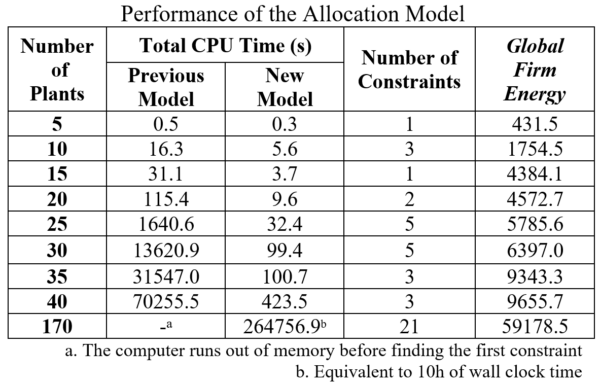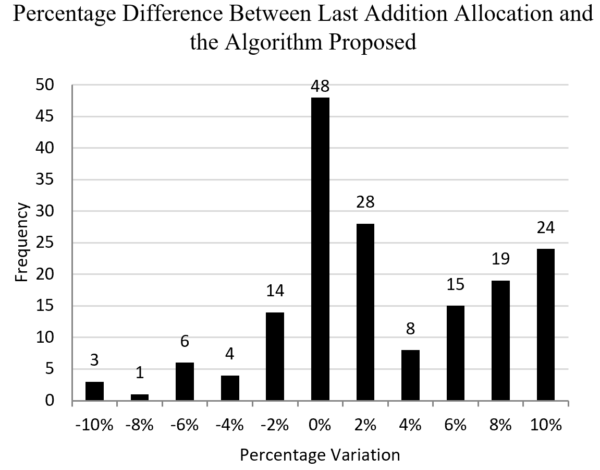Allocation of firm energy rights
The firm energy rights of a hydro plant is a parameter used in some electricity markets to define the maximum amount of energy that a power plant can trade through contracts. In a centralized dispatch scheme, the coordinated operation of the hydro plants generates a synergetic gain in the system firm energy, in this setting, a question that often arises is how to fairly allocate this energy among each hydro plant. In this work, we proposed a formulation to compute the firm energy rights of hydro plants using cooperative game theory and the last addition allocation method. The main goal was to integrate the interests of hydro agents with the needs of the regulatory agencies, searching in the core of the game for solutions that give the right incentives to the optimal system development. In order to make simulations of real instances possible, we propose a reformulation of the traditional Mixed Integer Linear Programming (MILP) model that computes the core constraints, which induces a significant speed-up of the algorithm solution time. Finally, we show an application of the proposed methodology to a real instance representing the Brazilian electric power system.
In the cooperative game theory, we say that an allocation belongs to the core of the game if its participants have no benefit in leaving the grand coalition. That is, the individual benefit that can be obtained by forming any sub coalition is always lower than the benefit this agent will obtain by remaining at the grand coalition. The problem of defining the core of a cooperative game is very complex since theoretically, we would need to verify 2NP constraints, where NP is the total number of participants in the game, in our case, the total number of hydro plants analyzed. This complexity has limited the use of cooperative game to problems of a small scale.
In this project, we proposed a formulation based on Mixed Integer Linear Programming that is capable of computing an allocation that satisfies the constraints of the cooperative game. Also, we proved that our methodology can be efficiently used to allocate firm energy rights in a large hydro system with more than 170 hydro plants. Finally, by simulating a real instance representing the Brazilian Electrical System, we could measure the differences between our methodology and the most traditional allocation approach still used in Brazil, the last addition method. Our results show that there is a substantial difference between the solutions provided by the regulatory agencies and the and the solutions in the core of the game, this behavior is not desirable since it decreases the incentives of the agents in participating in the centralized dispatch scheme, leading to reductions in energy efficiency and unoptimal management of upstream reservoirs.


Related Publications:
- VAD Faria, AR de Queiroz, LMM Lima, JWM Lima. Cooperative game theory and last addition method in the allocation of firm energy rights. Applied Energy, 2018.
- VAD Faria, AR de Queiroz, LMM Lima, JWM Lima. Analysis of multiple solutions in the calculus of firm energy. SBSE, 2018.